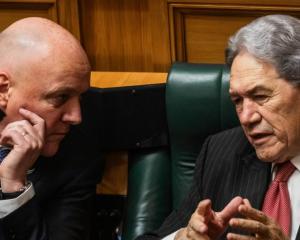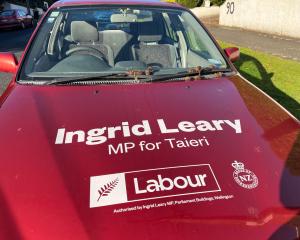John Key's new Cabinet hints at at least an attempt to provide diversity.
The traditional National base of white, middle-aged men still heavily dominates the group, but Key's front bench now also has three women, with Judith Collins featuring in the top four.
Even better for the party's representational image, the other two female frontbenchers, Hekia Parata and Paula Bennett, are also Maori.
However, with only 15 women among the party's 59 MPs, the long-standing criticism about National as an old boy's club is still pretty valid.
Looking around the latest Parliament, National lags far behind in female representation.
Women account for 14 of Labour's 34 MPs, while New Zealand First's seven MPs include three women. The Greens, who make a point of representative equality, perhaps unsurprisingly, dominate the female stakes, with eight women in the 14-strong caucus, including New Zealand's first deaf MP, Mojo Mathers.
Surely if Parliament was truly representational there would be something close to a 50/50 gender split, but that's not to say there hasn't been progress.
Labour MP Elizabeth McCombs opened the door for women in 1933, when she became the first woman to be elected, forcing a number of changes about Parliament.
The words for the swearing-in ceremony were altered to refer to "Members'' rather than "Gentlemen'', and the 'No Women Permitted' sign over Bellamy's dining room was removed.
Slow progress followed, with few women passing through Parliament until the 1980s, when they also began to claim positions in Cabinet.
In the final First Past the Post election, in 1993, just 21 of the 99 elected were women.
Labour's 45 MPs included 14 women, the Alliance had one, and National fell well behind - its six women out of 50 MPs represented a true reflection of its well-earned "white man band" reputation.
Last month's election puts New Zealand ahead of many OECD countries in terms of women in Parliament, but it will be interesting to see how long it takes until women are on truly even footing.
When it comes to ethnic mix, National also falls somewhat short.
Before even arriving in Parliament, Jian Yang, one of the party's newest MPs, said he was aware people would regard him as the "token Chinese MP''. Yang said National had come calling when Pansy Wong resigned.
In 2008, the party's Maori caucus doubled to six, and it has stayed steady on that number this year.
There does seem to be some sort of tepid National Party effort to mix up their members, but it seems National will retain its old-time Parliament look for some time yet.
The question does have to be asked: is diversity for the sake of diversity what we really need? Does the deliberate attempt to include a broader range of people actually improve representation?
Seeing themselves reflected in their Parliamentary makeup does not seem to have been much of an incentive for more people to vote - voter turnout this year dropped more than 5 per cent to a modern-day low.
And the messages of minority groups aren't necessarily being reflected by their representatives in Parliament.
Take the Maori Party for example. Despite their constituents voting Labour, and the caning they took in the election, the leaders have again struck up a deal with National.












